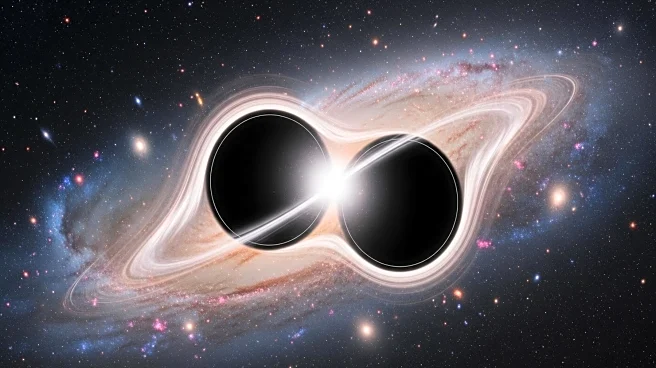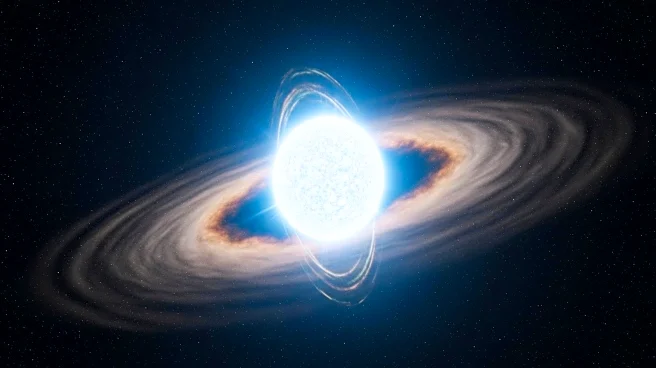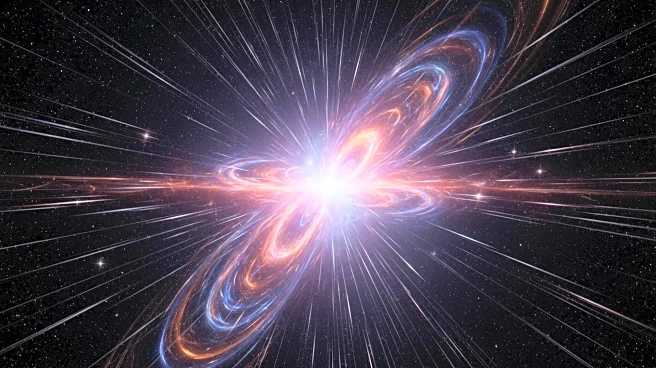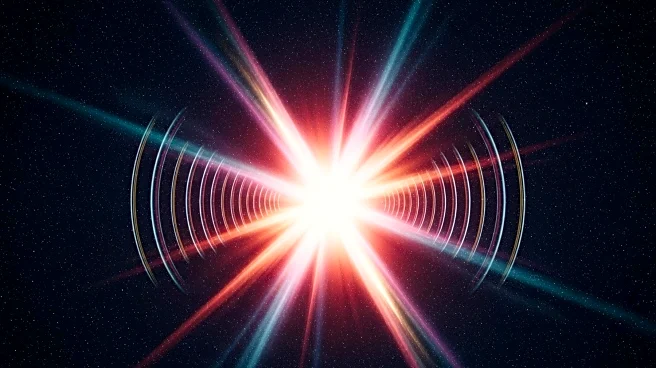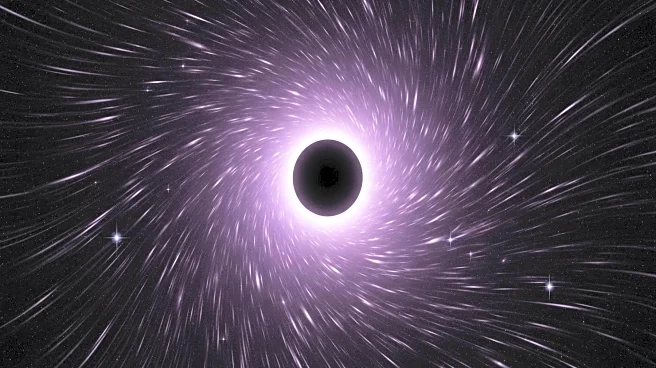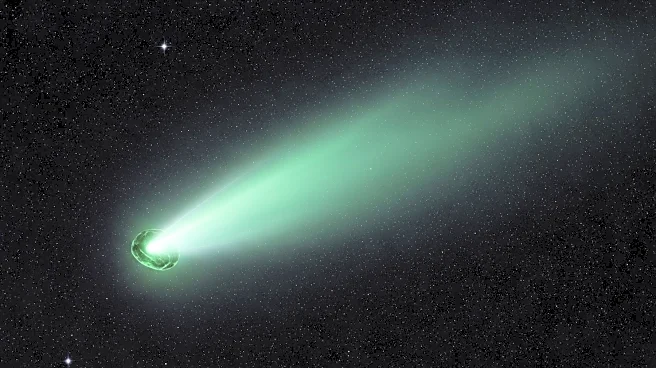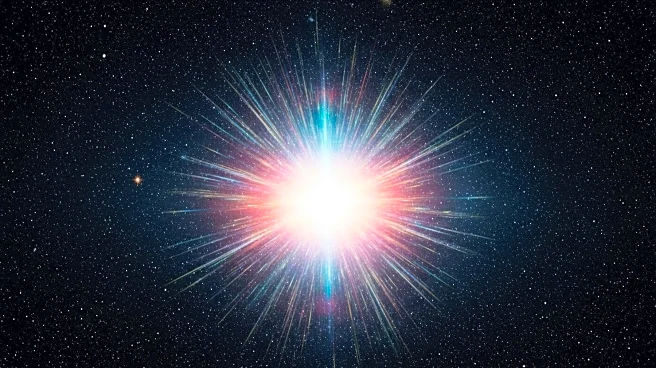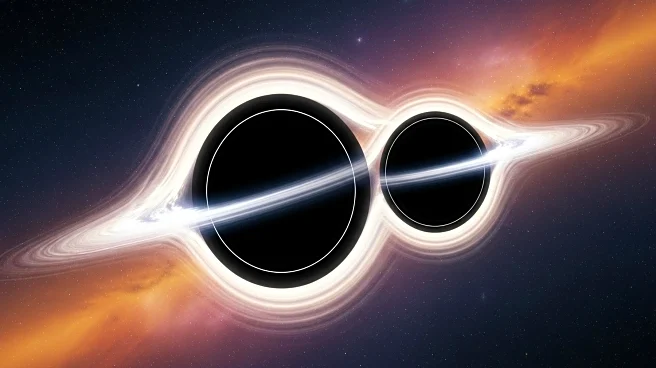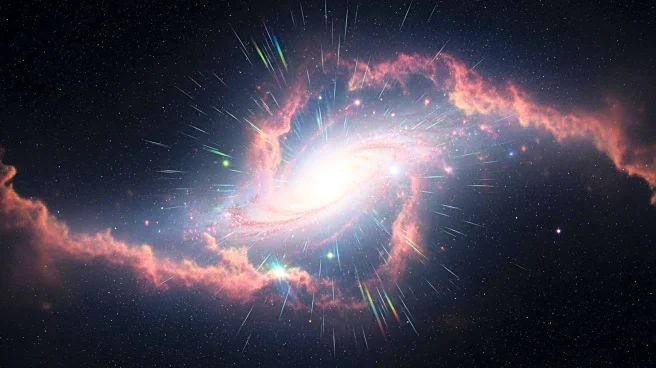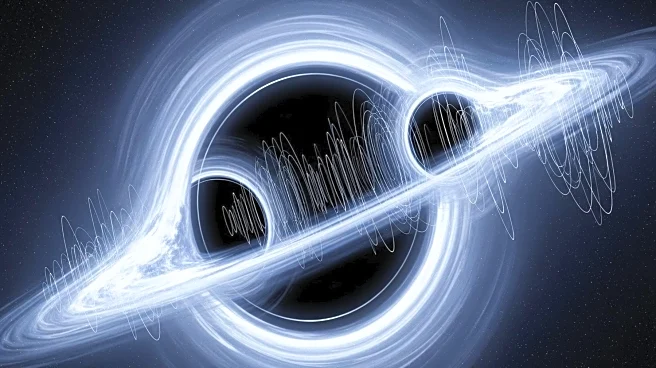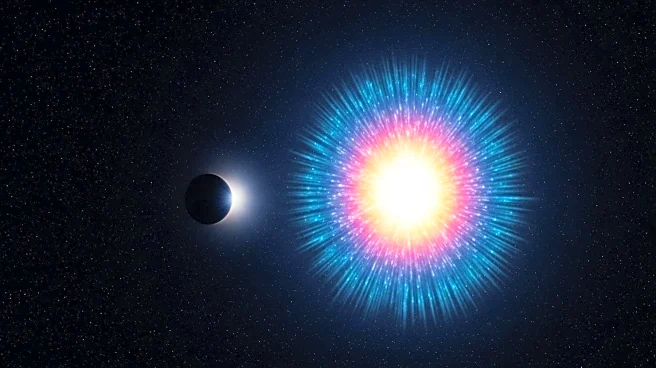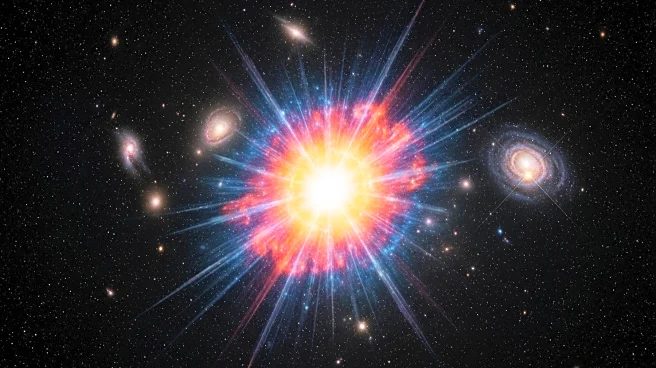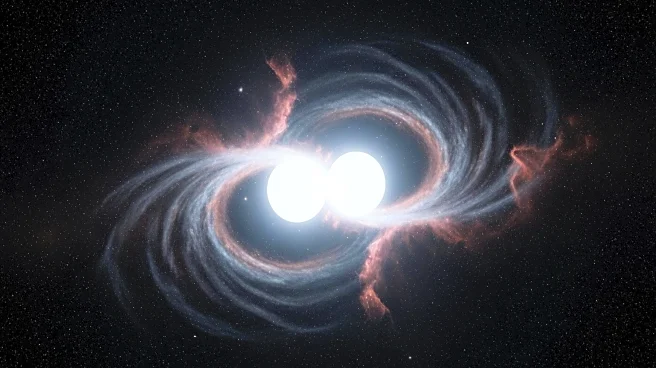What is the story about?
What's Happening?
The LIGO-Virgo-KAGRA collaboration has detected a significant gravitational wave signal, GW231123, resulting from a collision between two black holes with masses of 100 and 140 times that of the sun. This event created a daughter black hole with a mass of approximately 225 solar masses, marking the most massive black hole merger detected to date. The detection challenges existing models of black hole formation, as such massive black holes are considered unlikely through standard stellar evolution. Researchers suggest that these black holes may have formed through previous mergers of smaller black holes.
Why It's Important?
This discovery is crucial as it challenges the current understanding of black hole formation and evolution. The detection of such massive black holes through gravitational waves opens new avenues for astrophysical research, potentially altering theories about the lifecycle of stars and the formation of black holes. It also underscores the capabilities of the LIGO-Virgo-KAGRA collaboration in detecting and analyzing cosmic events, providing insights into the universe's most extreme phenomena. The findings could influence future research directions and technological advancements in gravitational wave astronomy.
What's Next?
The LIGO-Virgo-KAGRA collaboration will continue to refine their detection capabilities, aiming to observe more such massive mergers and understand their origins. Researchers may focus on developing new models to explain the formation of these massive black holes, possibly involving multiple merger events. The collaboration's ongoing efforts could lead to further breakthroughs in understanding cosmic events and refining the theoretical frameworks surrounding black hole physics.
Beyond the Headlines
The detection of GW231123 not only challenges existing models but also highlights the potential for gravitational wave astronomy to uncover previously unknown aspects of the universe. This event may prompt discussions on the ethical implications of advanced astronomical technologies and their role in expanding human knowledge. Additionally, it could lead to cultural shifts in how society perceives cosmic phenomena and the universe's vastness.
AI Generated Content
Do you find this article useful?
